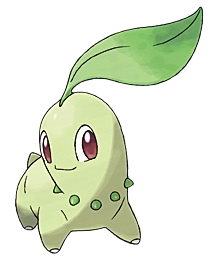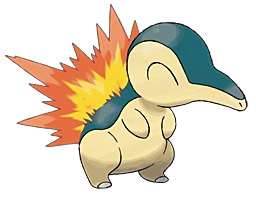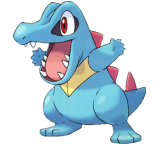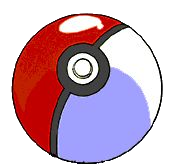Chikorita, Bayleef, and Meganium

Chikorita is a pure Grass type Pokemon. As it evolves into Bayleef and Meganium, it will learn new Normal and Grass type moves as well as developing solid Defense and Special Defense. Along with decent offensive moves such as Razor Leaf and BOdy Slam, it will be able to learn valuable support moves like Synthesis, Reflect, Light Screen, and Poison Powder.
Despite sounding solid enough and being a decent enough Pokemon in its own right, it is not recommended for new players to pick Chikorita at the beginning of the game. This is because the Johto region is very hostile to a pure Grass type; of the eight gym leaders, six of their teams are resistant to Grass moves and/or are strong against Grass types. Although Chikorita would be strong against Water, Rock, and Ground Pokemon, these are relatively rare for most of the game.
If you want to use Meganium in competitive play, you'll find that it's not a bad option, though not top tier. It can either play a supporting role using moves like Reflect, Light Screen, and Synthesis to set up defenses for allies while healing itself, or if bred carefully, it can be a powerful Swords Dance user with Body Slam and Earthquake.
Cyndaquil, Quilava, and Typhlosion

Cyndaquil is a pure Fire type Pokemon. It and its evolved forms specialize in having high Special Attack and Speed. As they level up, they will learn a variety of Normal and Fire type moves.
Cyndaquil's main problem is that it takes a while for it to learn new Fire moves. By default, it will learn Ember at Level 12, Flame Wheel at Level 31 just before evolving into Typhlosion, and Flamethrower at the distant Level 60. You can speed this up by not evolving, but even Cyndaquil doesn't learn Flamethrower until Level 46.
Despite this slow acquisition of Fire moves, there's a lot to be said for Cyndaquil. The Fire type is fairly uncommon in Johto, especially before the mid-game, and can be invaluable for defeating the various Bug and Grass types early on and Steel and Ice types later in the game. The Fire type is also notably a decent match against all gyms except for the last in Johto.
If Typhlosion is used competitively, you'll find that it's one of the best Fire types available. Though it is vulnerable to Ground moves like Earthquake, it stands out from the likes of Charizard and Moltres by being capable of learning Thunder Punch. This gives it a way of fighting back against the various Water types that it outspeeds, as well as a way of dealing with the various Flying types used at the higher levels of competitive play. In addition to Thunder Punch, it should know either Fire Blast or Flamethrower and possibly something like Dynamic Punch or Earthquake for even better coverage.
Totodile, Croconaw, and Feraligatr

Totodile is a pure Water type. It and its evolved forms focus on having high physical Attack and Defense stats. They mostly learn Normal and Water moves by leveling up, though they also pick up Bite as a Croconaw.
Totodile is probably the simplest choice of a starter in Gold, Silver, and Crystal versions. It isn't as hard to use as Chikorita and doesn't suffer from a drought of Water moves similar to Cyndaquil. This is because by the time you'll want to replace Totodile's Water Gun, you'll have easy access to the HM for Surf.
That being said, there is a major downside to picking Totodile: the mismatch between its Water type and its physical stats. This means that Totodile, and later Feraligatr, will not be able to use Water moves as well as some other Water type Pokemon. The Water type is full of great Pokemon that you'll be able to catch, many of which have advantages over Feraligatr.
Competitively speaking, Feraligatr is probably the worst of the three fully evolved starter Pokemon. It is overshadowed by at least a dozen other Water types, such as Starmie, Vaporeon, and Suicune. If used, it should take advantage of both its Water type by having at least one powerful Water move, but should otherwise use physical moves like Earthquake, Rock Slide, Dynamic Punch, and maybe Curse to improve its stats. That being said, Feraligatr is probably not the right choice for whatever competitive role you want it to play.
Pidgey, Pidgeotto, and Pidgeot
Pidgey and its evolved forms are Normal/Flying Pokemon. This means that they compete with Hoothoot and to a lesser extent Spearow, seeing how the three are all Normal/Flying bird Pokemon found in the early game that grow up to become roughly comparable in power. So how does Pidgey stack up?
Pidgey's best advantages are its Speed 56/XX/91 and its early move variety. By Level 9, Pidgey will have both a Normal and Flying attack option in Tackle and Gust, as well as Sand Attack to hinder enemy accuracy. Having two STAB options early on will make Pidgey a fairly powerful fighter in the early game.
The problem with Pidgey is that even as it grows and evolves, its options don't get that much better. Sure, it will eventually replace Tackle and Gust with Quick Attack and Wing Attack, but these aren't the strongest moves. Even with TM's Pidgey and its evolutions will not get that many other options either. It also hurts that although Pidgeot technically has higher base stats than its competitors Noctowl and Fearow, they are distributed in such a way that Pidgeot lacks the Special Tankiness of Noctowl or the Attack and Speed of Fearow.
Pidgey may be worth using for a while in the early game, but it is recommended that you don't leave it in your party for the entire game.
Spearow and Fearow
Spearow is the last of the three Normal/Flying Pokemon encountered in the early game, only being found once you reach Route 33. However, it and its evolution Fearow eventually become the best of the trio.
Spearow starts with the move Peck, but otherwise it and Fearow don't learn many interesting moves for a while. It gets Fury Attack for a Normal type move, but how effective that is compared to Quick Attack is open for debate due to the move's variable nature.
What makes Fearow worth the investment are its high Attack and Speed and its access to Drill Peck. Drill Peck is arguably the best Flying type move in the game, being almost as powerful as Fly without taking a turn to set up. That being said, its moves are otherwise about as limited as Pidgeot's.
Hoothoot and Noctowl
Hoothoot is the third of the Normal/Flying type birds in the early game, and is one of the first new Johto Pokemon available to capture. Unfortunately, it is arguably the worst of the trio.
There are some upsides to using a Hoothoot or Noctowl. Along with having higher HP and Special stats than the other early birds, they have access to a few Psychic type moves. Hypnosis can be a valuable move in the early game, putting dangerous opponents to sleep. At higher levels, Confusion can be learned, as can Dream Eater.
The main problem with Noctowl is that it gives up too much of what makes Pidgeot and Fearow good with too little in return. Noctowl doesn't learn any Flying moves better than Peck, and although it does learn Take Down, this is only learned at the relatively high Level 33. Confusion is a useful move, but by the time it is learned at Level 41, other Pokemon will already have the stronger Psybeam or Psychic. And like its fellow birds, it doesn't learn much from TM's to compensate for its poor innate moveset.
Hoothoot is best used as a way to put enemy Pokemon to Sleep in the early game, either for fighting or to capture them. However, they are not a recommended permanent part of your party.
